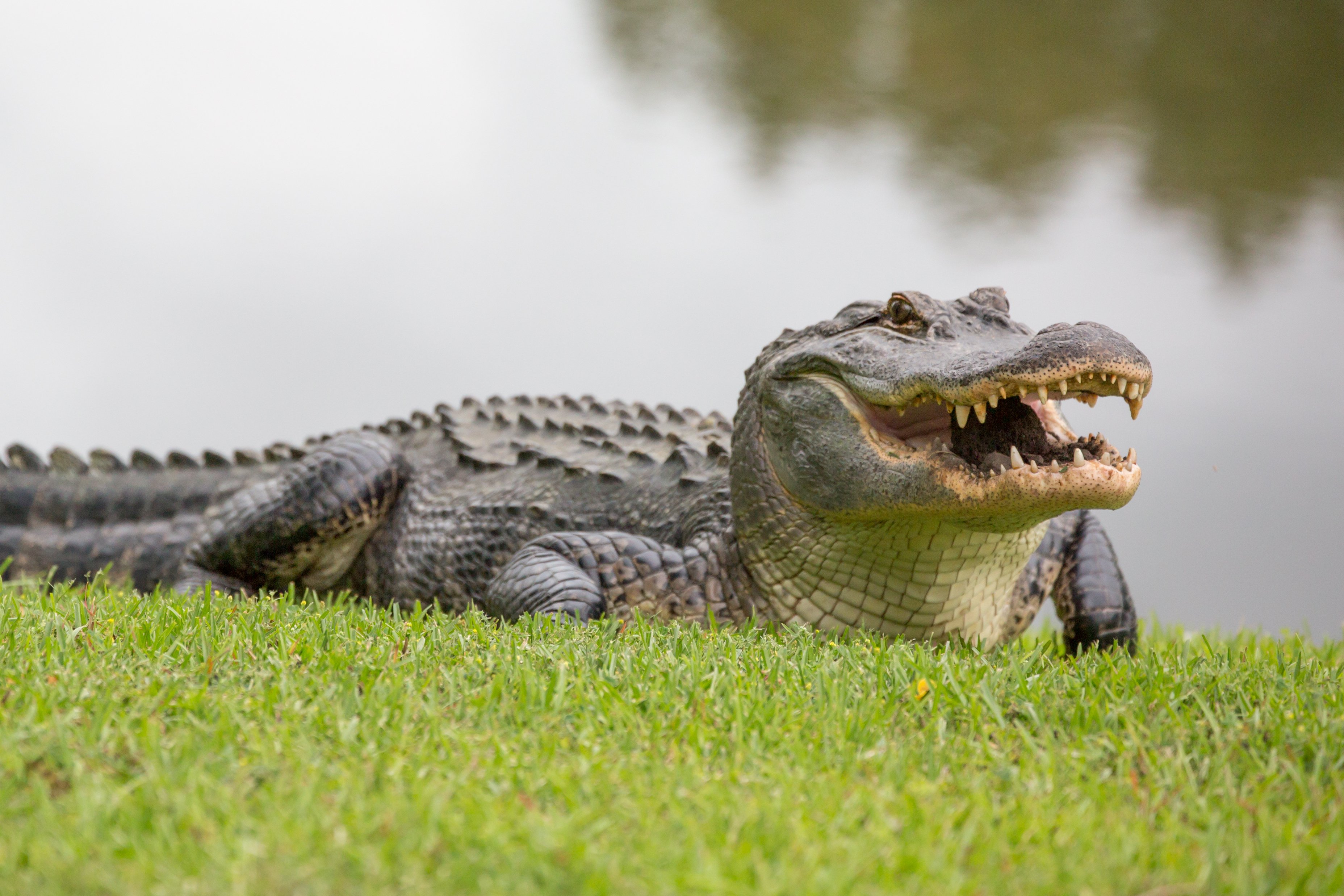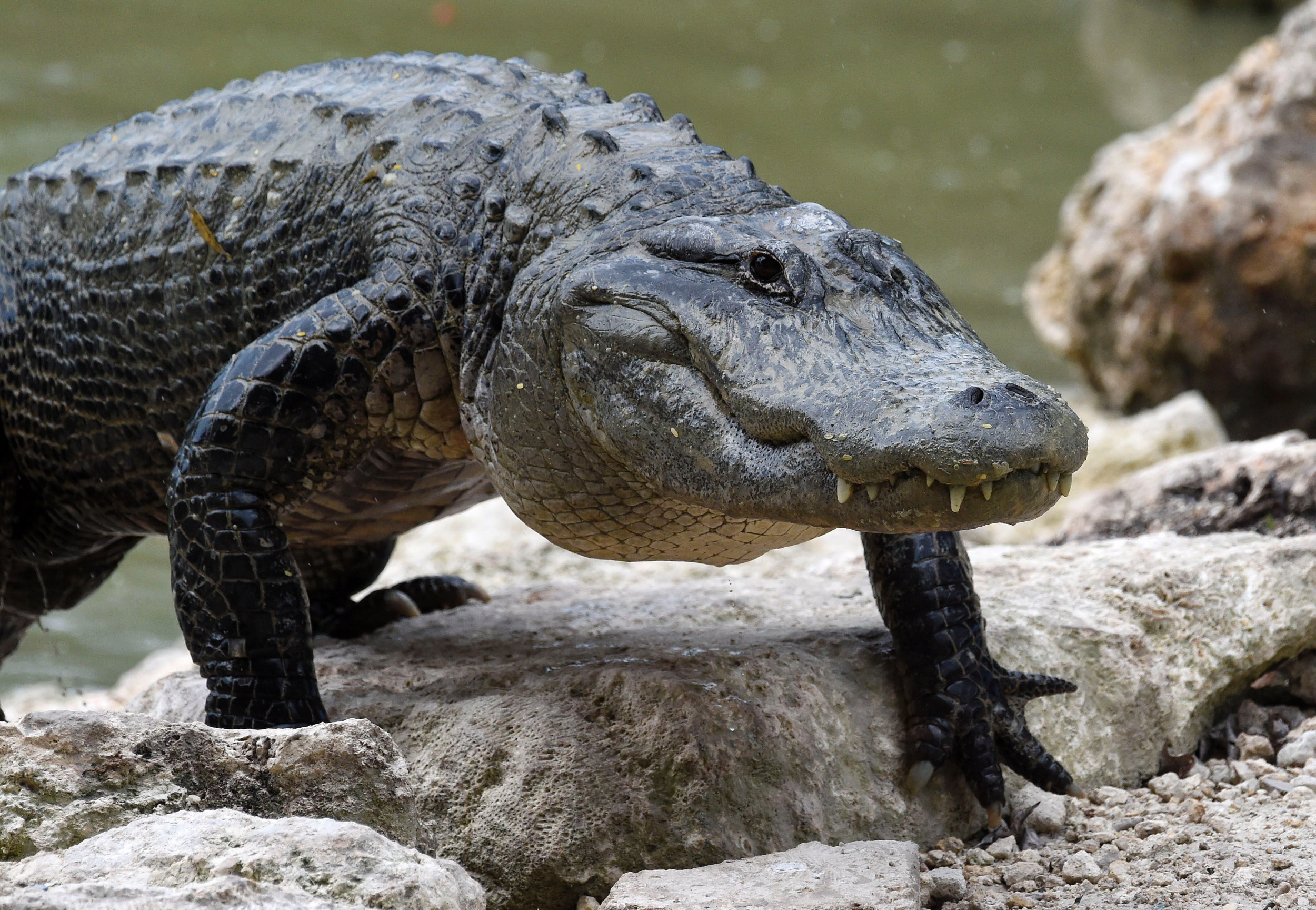Alligator in spanish language – Alligator en español, un término que evoca imágenes de poderosos reptiles y profundas conexiones culturales, es el tema central de este análisis exhaustivo. Desde su etimología hasta su importancia ecológica y su fascinante papel en el folclore, nos sumergiremos en el cautivador mundo del caimán en el ámbito hispanohablante.
Exploraremos la taxonomía y las características únicas de los caimanes, comparándolos con otras especies de cocodrilos. Mapeando su distribución geográfica y analizando sus hábitats preferidos, descubriremos el papel vital que desempeñan en los ecosistemas. Además, examinaremos sus fascinantes comportamientos de alimentación, interacciones sociales y patrones reproductivos.
Etymology and History of the Term
The Spanish word for “alligator” is “caimán.” It is derived from the Taino word “caiman,” which means “lizard.” The word was first used in Spanish in the 16th century, and it has since become the standard term for alligators in Spanish-speaking countries.
Alligators have a long and storied history in Spanish-speaking cultures. They are often seen as symbols of strength and power, and they have been featured in many myths and legends. In some cultures, alligators are even considered to be sacred animals.
Historical and Cultural Significance
The Spanish word for “alligator” has been used in a variety of historical and cultural contexts. For example, the word “caimán” was used by the Spanish conquistadors to describe the alligators they encountered in the New World. The word has also been used in Spanish literature and art for centuries.
In addition to their historical and cultural significance, alligators also have a number of practical uses. Their skin is used to make leather goods, and their meat is considered a delicacy in some cultures. Alligators are also important predators in the ecosystem, and they help to control the population of other animals.
Taxonomy and Characteristics of Alligators
Alligators belong to the order Crocodilia, which includes crocodiles, caimans, and gharials. They are classified within the family Alligatoridae, which comprises two extant species: the American alligator ( Alligator mississippiensis) and the Chinese alligator ( Alligator sinensis).Alligators are characterized by their broad, rounded snouts, which are lined with small, conical teeth.
They have powerful jaws and a strong tail that they use for propulsion in water. Their skin is covered in tough, overlapping scales, which provide protection against predators and the elements. Alligators are ectothermic, meaning they rely on external sources of heat to regulate their body temperature.
Size and Weight
Alligators are large reptiles, with the American alligator typically reaching lengths of 10-15 feet and weights of up to 1,000 pounds. The Chinese alligator is smaller, typically reaching lengths of 6-7 feet and weights of up to 100 pounds.
Habitat and Distribution
Alligators are found in freshwater habitats, including swamps, marshes, lakes, and rivers. They are native to the southeastern United States and eastern China.
Comparison to Other Crocodilian Species
Alligators share many similarities with other crocodilian species, such as crocodiles, caimans, and gharials. However, there are also some key differences. One of the most notable differences is the shape of their snouts. Alligators have broad, rounded snouts, while crocodiles have long, pointed snouts.
Additionally, alligators have a bony septum that separates their nostrils, while crocodiles do not.
Distribution and Habitat
Alligators are native to the southeastern United States and eastern China. In the Spanish-speaking world, they are found in Mexico, Belize, Guatemala, Honduras, Nicaragua, Costa Rica, Panama, Colombia, Venezuela, Guyana, Suriname, French Guiana, Ecuador, Peru, Bolivia, Paraguay, Argentina, and Uruguay.Alligators
prefer freshwater habitats such as swamps, marshes, lakes, rivers, and ponds. They can also be found in brackish water habitats such as estuaries and coastal lagoons. Alligators are ectothermic, meaning that they rely on external heat sources to regulate their body temperature.
As a result, they are most active during the day when the sun is shining. At night, they will often bask in the sun to warm up their bodies.Alligators are ambush predators that typically lie in wait for their prey to come close before attacking.
They have a powerful bite that can crush the bones of their prey. Alligators are opportunistic feeders and will eat a variety of animals, including fish, turtles, snakes, birds, and mammals.
*Distribution Map
[Image of a map showing the geographical distribution of alligators in the Spanish-speaking world]The map shows that alligators are found in a wide variety of habitats throughout the Spanish-speaking world. They are most common in the southeastern United States and eastern China, but they can also be found in Central and South America.
Behavior and Ecology
Alligators are apex predators that play a crucial role in their ecosystems. Their feeding habits, social interactions, and reproductive behaviors are fascinating and have been extensively studied.
Feeding Habits
Alligators are opportunistic carnivores that consume a wide variety of prey. Their diet includes fish, turtles, snakes, birds, mammals, and even other alligators. Alligators typically ambush their prey, using their powerful jaws and sharp teeth to capture and kill it.
They are also known to scavenge for food, especially during periods of low prey availability.
Social Interactions
Alligators are generally solitary creatures, except during the breeding season. They have a well-defined social hierarchy, with dominant males controlling the best basking and feeding spots. Alligators communicate with each other through a variety of vocalizations, including grunts, hisses, and bellows.
Reproductive Behaviors, Alligator in spanish language
Alligators reach sexual maturity at around 6-8 years of age. During the breeding season, males establish territories and attract females with their vocalizations. Females lay their eggs in nests made of vegetation, which they guard until they hatch. The incubation period is typically around 60-90 days.
Baby alligators are born with a bright yellow stripe on their backs, which helps them to camouflage themselves from predators.
Role in the Ecosystem
Alligators play an important role in their ecosystems as apex predators. They help to control populations of prey species, which in turn benefits other animals and plants. Alligators also create and maintain important habitats for other species, such as fish and turtles.
In some areas, alligators are considered keystone species, meaning that their presence is essential for the health of the entire ecosystem.
Cultural Significance: Alligator In Spanish Language

Alligators hold a significant place in the cultural tapestry of Spanish-speaking countries, inspiring myths, legends, and artistic representations.
In pre-Columbian cultures, alligators were often associated with water, fertility, and creation. The Aztec deity Cipactli, depicted as a giant alligator, was believed to have given birth to the earth and other gods.
Folklore and Myths
- In Colombian folklore, the “Caiman” is a mythical creature that protects rivers and lagoons, punishing those who disrespect its territory.
- In Mexico, the legend of “La Llorona” features a woman who drowned her children in a river and was transformed into a crying alligator.
- In Peru, the “Yacuruna” is a shape-shifting spirit that can appear as an alligator or a human.
Artistic Representations
Alligators have also been a subject of artistic expression:
- In Colombian pottery, alligators are often depicted as stylized figures, symbolizing fertility and prosperity.
- In Mexican murals, alligators may represent the underworld or the destructive forces of nature.
- In Peruvian textiles, alligators are woven into intricate designs, representing strength and protection.
Conservation Status
Alligators are listed as Least Concern by the International Union for Conservation of Nature (IUCN). However, some populations in the Spanish-speaking world are facing threats due to habitat loss, hunting, and pollution.
One of the main threats to alligators is habitat loss. Alligators rely on wetlands for survival, but these habitats are often drained or converted for other uses. This can lead to a decline in alligator populations.
Hunting
Alligators are also hunted for their meat and skin. This can lead to a decline in alligator populations, especially in areas where hunting is not regulated.
Pollution
Pollution can also harm alligators. Alligators can ingest pollutants through their food or water, and this can lead to health problems. Pollutants can also accumulate in the environment and harm alligator populations over time.
Efforts to Protect Alligators
There are a number of efforts underway to protect alligators in the Spanish-speaking world. These efforts include:
- Habitat protection: Governments and conservation organizations are working to protect alligator habitats from development.
- Hunting regulations: Hunting of alligators is regulated in many areas of the Spanish-speaking world. This helps to ensure that alligator populations are not over-hunted.
- Pollution control: Governments and conservation organizations are working to reduce pollution in waterways where alligators live.
Final Wrap-Up

En conclusión, alligator en español es un tema multifacético que abarca aspectos históricos, científicos y culturales. Al comprender su etimología, taxonomía, distribución, comportamiento y significado cultural, adquirimos una apreciación más profunda de estas magníficas criaturas y su importancia en el mundo hispanohablante.
Al proteger y preservar a los caimanes, garantizamos su supervivencia continua y el delicado equilibrio de los ecosistemas en los que habitan.
Expert Answers
¿Cuál es el origen del término “caimán” en español?
El término “caimán” deriva de la palabra taína “acaman”, que significa “lagarto”.
¿Dónde se encuentran los caimanes en el mundo hispanohablante?
Los caimanes se encuentran en varios países hispanohablantes, como México, Colombia, Venezuela y Argentina.
¿Qué papel juegan los caimanes en los ecosistemas?
Los caimanes son depredadores ápice que ayudan a controlar las poblaciones de peces y otros animales, manteniendo el equilibrio del ecosistema.